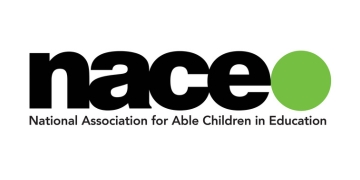The National Audit Office has today published its report into whether the government’s apprenticeships programme is providing value for money.
It is the second report by the NAO into apprenticeships since 2016, but the first since the introduction of the levy.
FE Week has the report’s main new findings:
-
ESFA has ‘limited assurance’ the 20% off-the-job-training rule is being complied with
The NAO said the Education and Skills Funding Agency, in summer 2018, had just one “red risk” associated with delivery of the apprenticeship programme – that apprentices do not spend at least 20 per cent of their time doing off-the-job training.
Its report said the ESFA “does not yet have an effective way of identifying where apprentices are routinely receiving less training than they should”.
“The ESFA’s audits may identify problems, but there is scope for providers to under-deliver for some time without this being picked up,” the NAO added.
“This is an important gap in oversight, as training providers are paid as long as apprentices remain on the programme.”
-
DfE’s apprentice targets for under-represented groups ‘lack ambition’
The NAO said the Department for Education is “on track” to meet two of its diversity targets: the numbers of starts by black, Asian and minority ethnic (BAME) apprentices and by apprentices with a learning difficulty, disability or health problem.
However, these targets are “not stretching”.
“For example, the target for starts by BAME apprentices (11.9 per cent) is lower than the working‑age BAME population of England (14.9 per cent) and much lower than the proportion of BAME pupils at the end of key stage 4 (20.7 per cent).”
The report added that 19 per cent of working-age adults in the UK reported having a disability in 2016/17, compared with the 11.9 per cent apprentice target on learning difficulties, disabilities and health problems.
-
Introduction of standards has increased higher level apprenticeship starts
In 2017/18, 12.8 per cent of starts were at level 4 or above, compared with 5.3 per cent in 2015/16, a trend that “looks set to continue”, the NAO said.
The department “considers that this change will encourage the types of apprenticeship that tend to deliver more value, in terms of long-term wage return to the apprentice”, although the training for these apprenticeships “also tends to absorb more public funding”.
The report added that some levy-paying employers are replacing their professional development programmes with apprenticeships.
“In such cases, there is a risk that the additional value of the apprenticeship to the economy may not be proportionate to the amount of government funding,” the NAO warned.
-
Apprenticeship programme lacks productivity measure
The DfE has “improved” its performance measures but is still not transparent in how it demonstrates the impact of the programme on economic productivity, according to the NAO.
It said the department reports a “skills index” for the programme which “takes account of the impact on earnings of successfully completing an apprenticeship, which is an established way of calculating productivity gains”.
However, the department has “not set out how these calculations feed into the index, or what kind of increase in the index would constitute success”.
-
A third of apprentices trained by poor providers in 2017/18
Ofsted rated 58 per cent of the established providers that it inspected in 2017/18 as ‘good’ or ‘outstanding’ for their apprenticeship training, compared with 49 per cent in 2016/17, the NAO report said.
These providers were “generally training larger numbers of apprentices”, which means “around two-thirds of the apprentices recorded at the time of inspection were being trained in ‘good’ or ‘outstanding’ providers”.
Ofsted’s monitoring visits to 118 new apprenticeship provider in 2018 found that more than a fifth of them were making ‘insufficient progress’ in at least one of the areas examined.
-
Apprenticeship assessment arrangements need fixing
The assessment arrangements are “incomplete” for some standards, which “increases the risk that people with different and possibly inadequate skill levels may pass their apprenticeship”, the NAO said.
Its report reiterated what FE Week has been warning for years, that not all apprenticeship standards have an end-point assessment organisation in place, and many have only one.
“Stakeholders raised concerns with us that, as growing numbers of apprentices finish their apprenticeship under a standard, there may be insufficient capacity to carry out assessments, leading to unnecessary delays or inconsistency,” the NAO said.
-
Long-term financial sustainability of the apprenticeship programme is at ‘risk’
The NAO’s biggest warning focused on potential overspend of the apprenticeship programme.
It said there is “clear risk” that the programme will not be financially sustainable after the average cost of training an apprentice hit double what the government predicted.
Click here to read the full story.
Concluding the report’s findings, Amyas Morse (pictured), the head of the NAO, said: “Despite making changes to the apprenticeships programme, the department has not enticed employers to use available funds or encouraged enough potential recruits to start an apprenticeship. It has much more to do to meet its ambitions.
“If the department is serious about boosting the country’s productivity, it needs to set out clearly whether its efforts are on track to meet that aim.”








Your thoughts